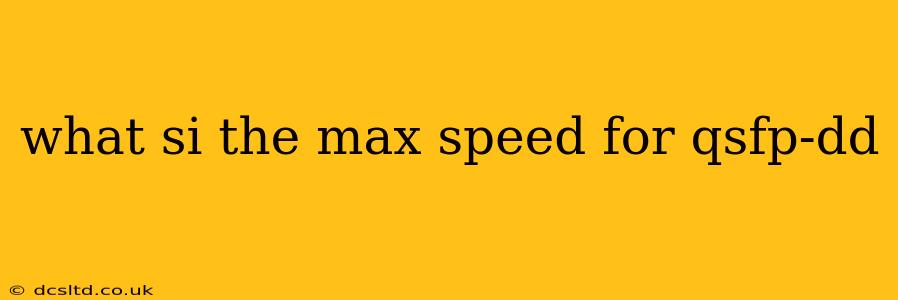The maximum speed for a QSFP-DD (Quad Small Form-factor Pluggable Double Density) transceiver depends on the specific implementation and the capabilities of the supporting equipment. While the standard allows for much higher speeds, you won't always see them in practice. Let's break it down:
What speeds are supported by the QSFP-DD standard?
The QSFP-DD standard itself supports data rates up to 112 Gbps per lane, and with eight lanes, this translates to a potential aggregate bandwidth of 800 Gbps. However, it's crucial to understand that this is the theoretical maximum. Real-world implementations may not reach this peak performance.
What speeds are commonly available in QSFP-DD transceivers?
While 800 Gbps is the potential top speed, you'll find several commonly available speeds in QSFP-DD transceivers including:
- 400 Gbps: This is a very popular and widely deployed speed, offering a significant upgrade over previous technologies.
- 200 Gbps: While less prevalent than 400Gbps, 200Gbps QSFP-DD transceivers are still available, particularly in specific niche applications.
- 100 Gbps: Less common in new deployments, but still found in some existing infrastructure.
Why might a QSFP-DD not reach its maximum speed?
Several factors can limit the achievable speed of a QSFP-DD connection:
- Hardware Limitations: The switch, router, or other network equipment must support the desired speed. Not all devices are capable of handling 800 Gbps. Older equipment may only support lower speeds even if it uses QSFP-DD physically.
- Cable Limitations: The optical cables used must also be compatible with the desired speed. Higher speeds require specialized, and often more expensive, cabling.
- Distance Limitations: Signal degradation over distance impacts data rates. The maximum achievable speed will decrease as the distance between devices increases.
- Specific Transceiver Capabilities: While the QSFP-DD standard supports high speeds, individual transceivers may have varying capabilities, dependent on factors like their modulation scheme and design.
What about future speeds?
Research and development continue to push the boundaries of optical transmission. While 800 Gbps is currently the highest aggregate speed supported by the standard, it's anticipated that future iterations of QSFP-DD or successor technologies will increase these limits even further.
What are the different types of QSFP-DD transceivers?
QSFP-DD transceivers are not all the same. They are differentiated by:
- Reach: Short-reach transceivers are designed for shorter distances (within a data center), while long-reach transceivers can support transmission over longer distances.
- Wavelength: Different wavelengths are used to avoid interference and allow for multiple connections on the same fiber.
- Modulation: Different modulation techniques, such as PAM4 (Pulse-Amplitude Modulation 4), affect speed and reach capabilities.
In summary, while the QSFP-DD standard allows for up to 800 Gbps, the actual maximum speed depends on various hardware, software, and environmental factors. 400 Gbps is currently a very common and practical speed for many deployments. Always check the specifications of your specific equipment and cabling to determine the achievable data rate.
